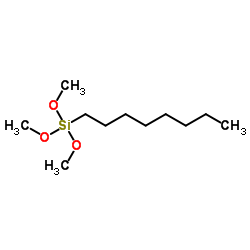Immobilization of lipases on alkyl silane modified magnetic nanoparticles: effect of alkyl chain length on enzyme activity.
Jiqian Wang, Gang Meng, Kai Tao, Min Feng, Xiubo Zhao, Zhen Li, Hai Xu, Daohong Xia, Jian R Lu
Index: PLoS ONE 7 , e43478, (2012)
Full Text: HTML
Abstract
Biocatalytic processes often require a full recycling of biocatalysts to optimize economic benefits and minimize waste disposal. Immobilization of biocatalysts onto particulate carriers has been widely explored as an option to meet these requirements. However, surface properties often affect the amount of biocatalysts immobilized, their bioactivity and stability, hampering their wide applications. The aim of this work is to explore how immobilization of lipases onto magnetite nanoparticles affects their biocatalytic performance under carefully controlled surface modification.Magnetite nanoparticles, prepared through a co-precipitation method, were coated with alkyl silanes of different alkyl chain lengths to modulate their surface hydrophobicity. Candida rugosa lipase was then directly immobilized onto the modified nanoparticles through hydrophobic interaction. Enzyme activity was assessed by catalytic hydrolysis of p-nitrophenyl acetate. The activity of immobilized lipases was found to increase with increasing chain length of the alkyl silane. Furthermore, the catalytic activities of lipases immobilized on trimethoxyl octadecyl silane (C18) modified Fe(3)O(4) were a factor of 2 or more than the values reported from other surface immobilized systems. After 7 recycles, the activities of the lipases immobilized on C18 modified nanoparticles retained 65%, indicating significant enhancement of stability as well through hydrophobic interaction. Lipase immobilized magnetic nanoparticles facilitated easy separation and recycling with high activity retaining.The activity of immobilized lipases increased with increasing alkyl chain length of the alkyl trimethoxy silanes used in the surface modification of magnetite nanoparticles. Lipase stability was also improved through hydrophobic interaction. Alkyl silane modified magnetite nanoparticles are thus highly attractive carriers for enzyme immobilization enabling efficient enzyme recovery and recycling.
Related Compounds
| Structure | Name/CAS No. | Molecular Formula | Articles |
|---|---|---|---|
 |
Trimethoxy(octyl)silane
CAS:3069-40-7 |
C11H26O3Si |
|
Preparation of Cu(2+)-mediated magnetic imprinted polymers f...
2016-04-01 [Talanta 150 , 46-53, (2016)] |
|
Porphyrin-embedded silicate materials for detection of hydro...
2011-01-01 [Sensors (Basel.) 11 , 886-904, (2012)] |
|
Silane modified upconversion nanoparticles with multifunctio...
2016-01-01 [Sci. Rep. 6 , 22350, (2016)] |
|
Silica/polyethylene nanocomposite particles from catalytic e...
[Macromolecules 39(6) , 2056-2062, (2006)] |
|
XPS and FTIR surface characterization of TiO2 particles used...
[Langmuir 17(9) , 2664-2669, (2001)] |